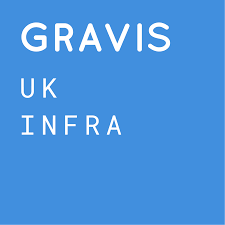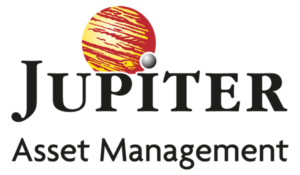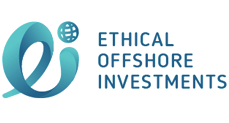The importance of diversification in times of uncertainty
Juliet Schooling Latter – FundCalibre
23 June 2025

In a time when fresh risks to the global economy dominate headlines almost daily, there has rarely been a more critical moment to ensure your investment portfolio is properly diversified.
Following the recent US airstrikes on three Iranian nuclear sites, markets are bracing for potential repercussions—particularly disruptions to oil flows and commercial shipping through key global routes. Crude oil prices responded with only modest gains; however, should prices rise further, we could see renewed inflationary pressure across the globe threatening to derail central banks’ efforts to begin cutting interest rates.
This type of geopolitical event highlights why diversification isn’t just a suggested investment strategy, it’s a necessity. Spreading risk across asset classes, sectors, and geographies can help insulate long-term portfolios from shocks in any one area of the market.
Strategies for effective diversification
At the heart of diversification lies asset allocation – the distribution of investments across different asset classes such as stocks, bonds, and real estate. While stocks offer growth potential, bonds provide stability, and commodities (the likes of oil and energy stocks) can act as a hedge against inflation.
1. Geographic diversification
Beyond asset classes, geographic diversification involves spreading investments across different regions and countries. This strategy helps mitigate the risk associated with a specific country’s economic and political conditions. No economy moves in isolation, but regional dynamics, whether it’s consumer trends in Asia or fiscal policy in Europe, can diverge significantly. Having exposure to multiple geographies helps smooth returns and capture opportunities wherever they emerge.
 The Guinness Asian Equity Income fund invests in dividend-paying companies across Asia, capturing growth in emerging and developed Asian economies while maintaining a focus on income. In a recent interview with manager Edmund Harriss, we discussed the appeal of Asian equities and long-term income potential.
The Guinness Asian Equity Income fund invests in dividend-paying companies across Asia, capturing growth in emerging and developed Asian economies while maintaining a focus on income. In a recent interview with manager Edmund Harriss, we discussed the appeal of Asian equities and long-term income potential.

Another option is to look towards Europe, with the BlackRock European Dynamic fund. This flexible, actively managed fund focuses on undervalued European companies with turnaround potential. The fund is one of the best in a competitive sector, with a genuinely flexible approach and a willingness from the team to constantly refine and enhance the fund’s process.
2. Sector diversification
Sectors within the economy don’t move uniformly. By diversifying across industries, investors can navigate the cyclical nature of different sectors. For instance, if technology stocks face a downturn, investments in healthcare or energy may counterbalance the losses.

The VT Gravis UK Infrastructure Income fund is a concentrated portfolio offering exposure to income-generating UK infrastructure assets, a relatively defensive area that often moves independently of broader equity markets.

Polar Capital Global Healthcare Trust is a unique offering investing in a very specialist part of the market. Holdings in the trust will predominantly come from four sub-sectors: pharmaceuticals, biotechnology, medical technology and healthcare services.
3. Size and style diversification
Investors can further diversify by considering the size and style of companies. Large-cap stocks, mid-cap stocks, and small-cap stocks may perform differently under various market conditions. Similarly, value and growth investing styles have distinct characteristics, allowing investors to balance risk and reward based on their preferences.
 The mid-cap space is a growing segment, but with few funds directly investing in it. One option is AXA Framlington UK Mid Cap; this fund offers a blend of growth and resilience often overlooked in favour of large caps. While it naturally focuses on medium-sized companies, its manager will be pragmatic about including select opportunities from the smaller companies space, as well as letting winning mid-cap holdings grow into larger-sized companies.
The mid-cap space is a growing segment, but with few funds directly investing in it. One option is AXA Framlington UK Mid Cap; this fund offers a blend of growth and resilience often overlooked in favour of large caps. While it naturally focuses on medium-sized companies, its manager will be pragmatic about including select opportunities from the smaller companies space, as well as letting winning mid-cap holdings grow into larger-sized companies.
4. Alternative investments
Including alternative investments, such as commodities or private equity, can add an extra layer of diversification. These assets often have low correlations with traditional stocks and bonds, offering a unique risk-return profile.

The Jupiter Gold & Silver fund invests in both physical gold and silver bullion, as well as gold and silver mining companies. Manager Ned Naylor-Leyland is a passionate advocate for his asset class and in a recent interview told us more about the evolving role of precious metals in modern portfolios.
![]() Schroder British Opportunities is another unique offering for investors which seeks to tap into the unloved status of UK equities. We believe the mix of public and private exposure really does allow the trust to stand out from its peers.
Schroder British Opportunities is another unique offering for investors which seeks to tap into the unloved status of UK equities. We believe the mix of public and private exposure really does allow the trust to stand out from its peers.
5. A multi-asset approach
You can diversify your own portfolio by combining various asset classes, sectors and geographical exposures, depending on your aims and objectives. This will give you the freedom to have a hand-picked portfolio. However, it’s also a lot of work and will require plenty of research.
An alternative is opting for one of the many multi-asset portfolios. These products combine different asset classes into one fund. One or more managers will then make the allocation calls required. For those who prefer to lean on the side of caution in today’s uncertain climate, here are two funds with capital preservation at their core.

The first one is Orbis Global Cautious. A globally diversified, conservative strategy built for capital preservation with measured equity exposure. The fund seeks to apply a cautious balance between investment returns and risk of loss using a global diversified portfolio and targets growth on a three-year rolling basis.

Our next pick is SVS RM Defensive Capital. Long-term capital growth and protection is the name of the game for this defensive, multi-asset fund. It aims to deliver positive absolute returns over rolling three-year periods, in a range of market conditions, with less volatility than equity funds.
Conclusion
In volatile times, diversification isn’t about trying to predict the future, it’s about preparing for the unexpected. By incorporating a mix of defensive and growth-oriented strategies across different regions and sectors, investors can help steady their portfolios and stay focused on long-term goals.
While no strategy can eliminate risk entirely, a well-diversified portfolio can provide resilience when markets are shaken by geopolitical tension, economic shocks, or inflationary pressures. It allows investors to remain invested through periods of uncertainty without being overly exposed to any single area of weakness.
Remember, diversification is not just a one-time decision, it’s an ongoing process. Markets evolve, opportunities shift, and risks emerge in new forms. The key is to remain proactive, regularly reviewing your portfolio to ensure it aligns with your objectives, risk tolerance, and the changing global landscape
Please Note:
This article was first published by Fund Calibre and is provided for information only. The views of the author and any people quoted are their own and do not constitute financial advice. The content is not intended to be a personal recommendation to buy or sell any fund or trust, or to adopt a particular investment strategy. However, the knowledge that professional analysts have analysed a fund or trust in depth before assigning them a rating can be a valuable additional filter for anyone looking to make their own decisions. Past performance is not a reliable guide to future returns. Market and exchange-rate movements may cause the value of investments to go down as well as up. Yields will fluctuate and so income from investments is variable and not guaranteed. You may not get back the amount originally invested.
Please speak to Ethical Offshore Investors or your personal adviser BEFORE you make any investment decision based on the information contained within this article.
At Ethical Offshore Investments, we can access the funds mentioned in this article on the various offshore investment platforms we offer. We do NOT CHARGE any additional entry and/or exit fees to purchase these funds for our clients.
As we aim not to use commission paying funds, we will access the lowest charging version of the managed fund that is available on the relevant platform…… resulting in more of the investment growth staying in your pocket.
Speak with Ethical Offshore Investments to learn how you can save on your investments costs
Socially Responsible Investing – Ethical Business Standards
